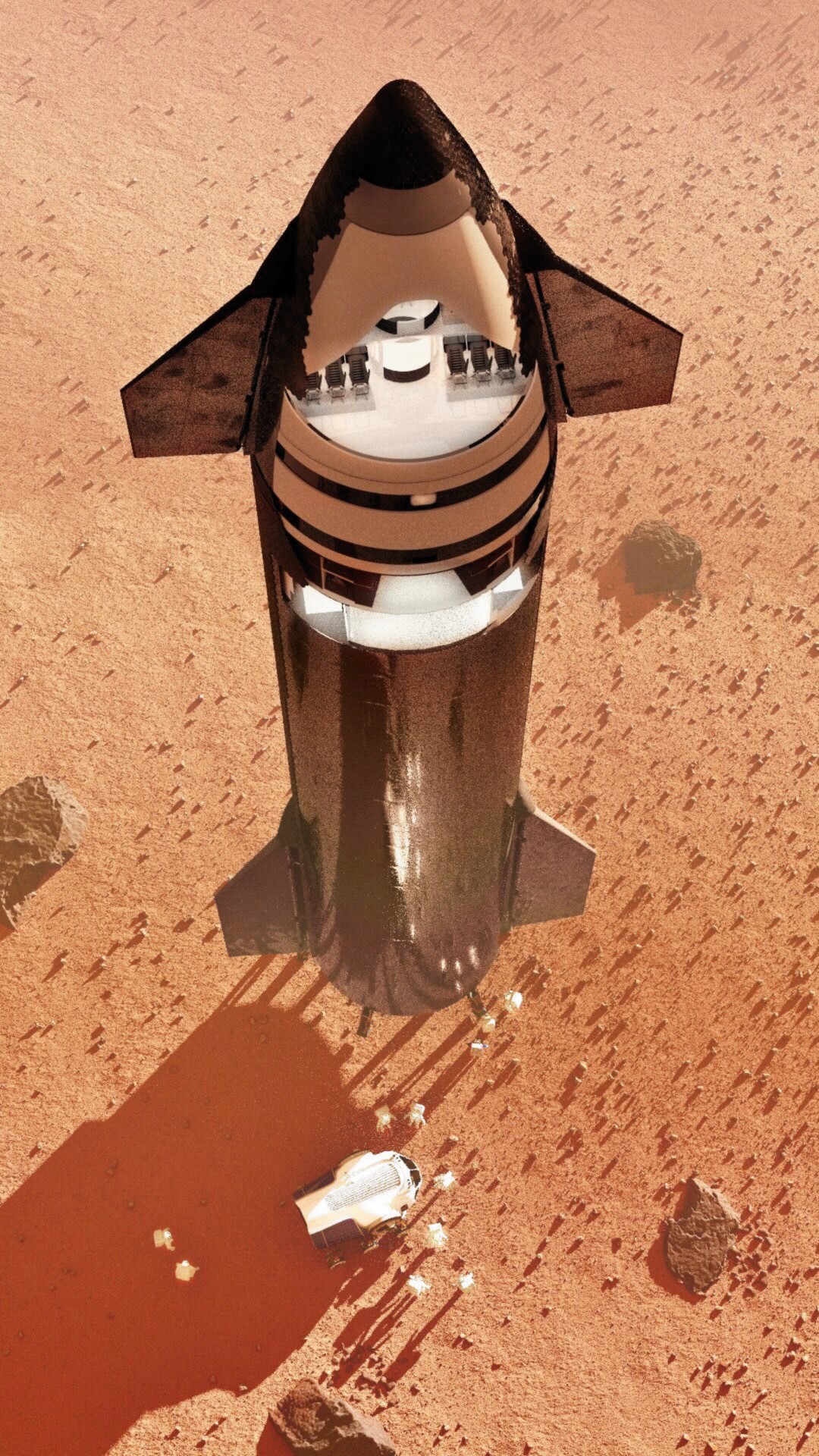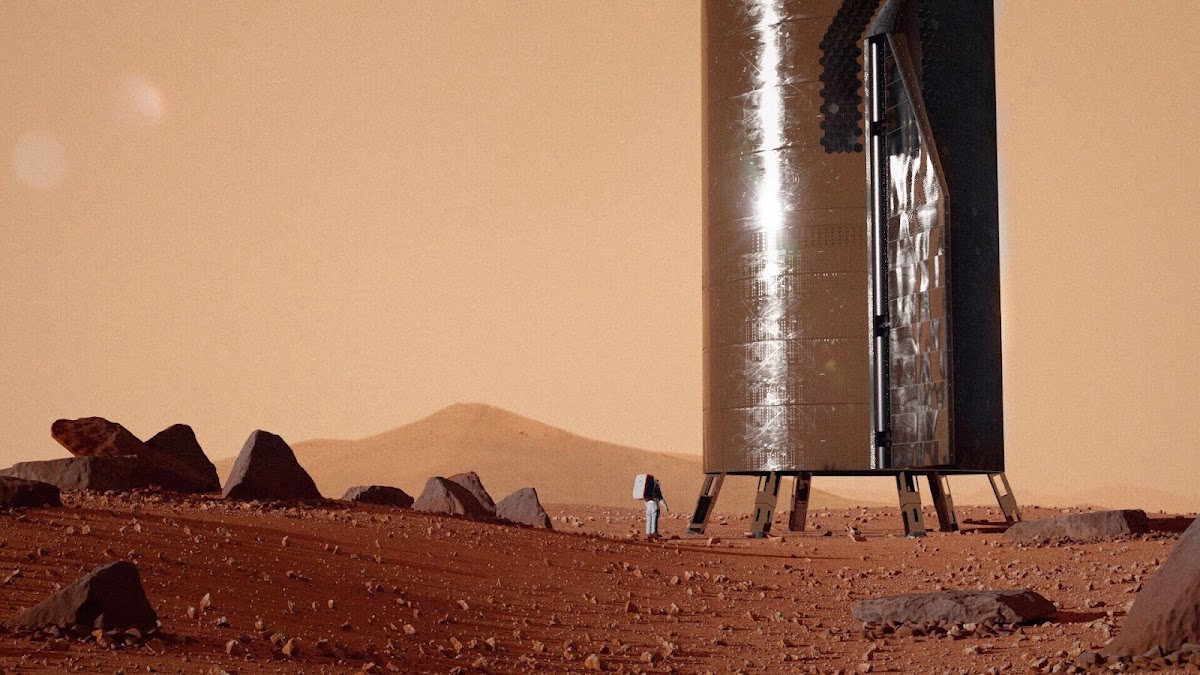The render is sourced from NASA's video "Pioneering Space" published 10 years ago:
Showing posts with label Mars Exploration. Show all posts
Showing posts with label Mars Exploration. Show all posts
Sunday, June 29, 2025
NASA's astronauts exploring Phobos
In this NASA concept rendering, an astronaut in a bulky EVA suit stands on the jagged, crater‑pocked surface of Phobos, Mars’s largest and closest moon, as the ruddy disk of Mars looms enormous on the horizon. The uneven regolith stretches out toward a steep crater rim, inside which a fleet of landers and robotic hopper vehicles carry out survey operations.
Sunday, April 27, 2025
China will build a robotic Mars base by 2038
 In March, China unveiled an ambitious update to its interplanetary exploration strategy, aiming to establish a robotic research base on Mars by 2038, as part of a broader roadmap to explore the Solar System through 2050. The initiative is managed by the China National Space Administration (CNSA).
In March, China unveiled an ambitious update to its interplanetary exploration strategy, aiming to establish a robotic research base on Mars by 2038, as part of a broader roadmap to explore the Solar System through 2050. The initiative is managed by the China National Space Administration (CNSA).
In 2019 China opened Mars Base 1 Camp - a Mars simulation base in Jinchang, Gansu Province
The first Mars-related mission on this roadmap is the Tianwen-3 Mars sample return mission, already approved and currently scheduled to launch in late 2028, with the aim to deliver samples back on Earth in 2031.
In 2038 China plans to establish a robotic Mars Research Station focused on in-situ resource utilization (ISRU) and conduct long-term Martian environmental and biological research. While initially robotic, the base’s infrastructure will lay the groundwork for future human habitation, mirroring strategies used for China’s future International Lunar Research Station (ILRS) to be permanently habitable after 2035.
Saturday, January 27, 2024
Road to the City - Part 4 of Martian sketches by Andrey Maximov
 Environment concept artist Andrey Maximov from Armenia has created an impressive set of artworks called Martian sketches depicting a "routine" journey to Mars in 2089. So far he has published 30 pages of those sketches. As the artist describes them: "this series is kind of like the road sketches of a member of an expedition to Mars. It's a routine flight in the not-too-distant future. The planet is more or less inhabited. We have an orbital station around Mars. There are already several settlements on the surface, mining is going on."
Environment concept artist Andrey Maximov from Armenia has created an impressive set of artworks called Martian sketches depicting a "routine" journey to Mars in 2089. So far he has published 30 pages of those sketches. As the artist describes them: "this series is kind of like the road sketches of a member of an expedition to Mars. It's a routine flight in the not-too-distant future. The planet is more or less inhabited. We have an orbital station around Mars. There are already several settlements on the surface, mining is going on."
- 1st part (10 sketches) of Andrey's Martian sketches depicted the expedition leaving Earth;
- 2nd part (5 sketches) depicted expedition's arrival to "International Mars Orbital Station";
- 3rd part (6 sketches) depicted spaceport "Anteros" on Mars.
Here is 4th part (4 sketches) depicting expedition's road to the "Harmonia City" on Mars:
Sunday, January 14, 2024
How to steal an asteroid .. "For All Mankind" season 4
It's possible our judgement is biased towards Mars-related content, but season 4 of For All Mankind alternate history sci-fi TV series is show's most exciting season yet. In season 4, depicting the alternate 2003, the international Happy Valley Base, founded in 1995 during season 3, has been significantly expanded and there are around 200 people living in it. We made a separate article with a large collection of high resolution shots depicting the exterior and interior of Happy Valley Base:
Mars base for 200 people in For All Mankind season 4
The main theme in season 4 is increasingly diverging visions for the purpose of human presence on Mars. For some it's only another contract job, but for others Mars is a new place to call "home". Add to the mix a once-in-a-lifetime opportunity to get hold on a large lithium-rich asteroid and increasingly strained relationships between the "upper class" (astronauts / cosmonauts, scientists and top executives) and contract workers literally living underground, and you have a recipe for a "Martian rebellion".
For All Mankind is exploring the idea of never ending space race if Soviets would have beaten US in the race for the Moon and the intention of the show is each season to jump about a decade further into the increasingly diverging reality of the show: in season 1, depicting alternate 1969 to 1974, both Soviets and US start building their separate bases near the lunar South pole; in season 2 (1983) both bases have been expanded and the superpowers compete for resources on the Lunar surface; in season 3 (1992 to 1995), Soviets and US are joined by a private company Helios and North Korea for a four way race to be first on Mars; in season 4 (2003) there is a sprawling international human base on Mars and an unexpected side enters the race to get hold on a large, lithium-rich asteroid for mining. You can watch the show on Apple TV+
Ahead there is a VISUAL RECAP OF SEASON 4, consisting of high resolution shots, downscaled from 4K UHD screens for better image quality. Be aware of heavy spoilers, revealing major story plots:
Mars base for 200 people in For All Mankind season 4
The main theme in season 4 is increasingly diverging visions for the purpose of human presence on Mars. For some it's only another contract job, but for others Mars is a new place to call "home". Add to the mix a once-in-a-lifetime opportunity to get hold on a large lithium-rich asteroid and increasingly strained relationships between the "upper class" (astronauts / cosmonauts, scientists and top executives) and contract workers literally living underground, and you have a recipe for a "Martian rebellion".
For All Mankind is exploring the idea of never ending space race if Soviets would have beaten US in the race for the Moon and the intention of the show is each season to jump about a decade further into the increasingly diverging reality of the show: in season 1, depicting alternate 1969 to 1974, both Soviets and US start building their separate bases near the lunar South pole; in season 2 (1983) both bases have been expanded and the superpowers compete for resources on the Lunar surface; in season 3 (1992 to 1995), Soviets and US are joined by a private company Helios and North Korea for a four way race to be first on Mars; in season 4 (2003) there is a sprawling international human base on Mars and an unexpected side enters the race to get hold on a large, lithium-rich asteroid for mining. You can watch the show on Apple TV+
Ahead there is a VISUAL RECAP OF SEASON 4, consisting of high resolution shots, downscaled from 4K UHD screens for better image quality. Be aware of heavy spoilers, revealing major story plots:
During season 4 interplanetary ships don't land directly on Mars; instead they dock to Phoenix, orbiting Mars, and the rest of the trip is made via small shuttles heading down to the surface:
Ed and Svetlana flying the asteroid capture ship Ranger:
Season 4 starts with an unsuccessful asteroid capture mission:
Thursday, November 30, 2023
Tesla Cybertruck - a pickup truck made for Mars
4 years after the initial unveiling, today is the day when the long-anticipated Tesla Cybertrucks will be delivered to the first customers. Cybertruck is an electric pickup truck with a radically different design and features that no other automaker has ever attempted. Tesla's stainless steel pickup truck doesn't even look like it's made for Earth. Indeed, on several occasions, Elon Musk has stated that a "pressurized edition" of Cybertruck will be the "official truck of Mars".
Of course, the Cybertruck will need to be heavily modified to be useful in Martian conditions (the pressure difference is just one of the problems that will need to be solved), but we can easily imagine a truck with Cybertruck's design features driving around on Mars in not so distant future. We can even imagine a Tesla factory producing those Martian Cybertrucks on Mars itself as early as the 2050s.
Cybertruck Delivery Event will be livestreamed on Tesla's website at 2:00 pm CT.
 |
| Illustration of Tesla Cybertruck on Mars by Canadian graphic designer Andres Gonzalez |
Of course, the Cybertruck will need to be heavily modified to be useful in Martian conditions (the pressure difference is just one of the problems that will need to be solved), but we can easily imagine a truck with Cybertruck's design features driving around on Mars in not so distant future. We can even imagine a Tesla factory producing those Martian Cybertrucks on Mars itself as early as the 2050s.
Cybertruck Delivery Event will be livestreamed on Tesla's website at 2:00 pm CT.
Sunday, February 26, 2023
Exploring Mars with children by Jon Hrubesch
In "Captain Imagine: Tour of the Solar System" (2020) children's book by Karim Elmahmoudi Captain Imagine, a futuristic space explorer, takes young Emily and her brother Simon on a guided tour of our Solar System. The retrofuturistic illustrations for the book were created by American digital painter Jon Hrubesch. Here is one of the illustrations where Captain Imagine and the two children are exploring a Martian canyon.
Sunday, February 5, 2023
Retrofuturistic Mars exploration base by Pascal Lee
In 2021 planetary scientist, the director of Haughton-Mars Project, Pascal Lee created a painting with the same, slightly updated scene of the first human exploration mission on Mars as in Chesley Bonestell's famous painting "Exploring Mars" featured in the 1956 book "The Exploration of Mars" by Willy Ley and Wernher Von Braun.
Highlighting Bonestell's legacy, Pascal Lee wrote: "In painting this new "Exploring Mars", I wanted to pay tribute to the grand master of space art and his creation of an iconic classic, but also update elements of the landscape and hardware in light of new knowledge gained about Mars in the intervening 65 years and evolutions in our thinking about future Mars exploration systems and human surface operations."
Highlighting Bonestell's legacy, Pascal Lee wrote: "In painting this new "Exploring Mars", I wanted to pay tribute to the grand master of space art and his creation of an iconic classic, but also update elements of the landscape and hardware in light of new knowledge gained about Mars in the intervening 65 years and evolutions in our thinking about future Mars exploration systems and human surface operations."
Comparison of Bonestell's (1956) and Lee's (2021) "Exploring Mars":
Sunday, January 29, 2023
First SpaceX astronauts stepping down on Mars; animation by iamVisual
Saturday, January 21, 2023
Astronaut looking at rocket launch tower on Mars by Mark Garlick
 Picture of the Day 21/01/2023 - astronaut looking at a rocket launch tower on Mars by British illustrator Mark Garlick. More of his art here.
Picture of the Day 21/01/2023 - astronaut looking at a rocket launch tower on Mars by British illustrator Mark Garlick. More of his art here.
Tuesday, December 6, 2022
Exploration rover in Noctis Labyrinthus, Mars by Ludovic Celle
 Picture of the Day 06/12/2022 - Large human exploration rover in Noctis Labyrinthus, Mars (a region with maze-like system of deep, steep-walled valleys West of Valles Marineris) by French graphic artist Ludovic Celle. More of his Mars art here.
Picture of the Day 06/12/2022 - Large human exploration rover in Noctis Labyrinthus, Mars (a region with maze-like system of deep, steep-walled valleys West of Valles Marineris) by French graphic artist Ludovic Celle. More of his Mars art here.
Monday, October 24, 2022
Astronaut exploring a cliff on Mars by Pat Rawlings
 Picture of the Day 24/10/2022 - Astronaut exploring a vertical cliff on Mars (1993) by classical space illustrator Pat Rawlings. More of his art here.
Picture of the Day 24/10/2022 - Astronaut exploring a vertical cliff on Mars (1993) by classical space illustrator Pat Rawlings. More of his art here.
Tuesday, August 16, 2022
"For All Mankind" season 3 brings space race to Mars
Soviets and US are joined by a private company Helios for a three way race to Mars in the alternate 1990s of For All Mankind season 3. The alternate history sci-fi TV series are exploring the idea of never ending space race if Soviets would have beaten US in the race for the Moon. In first two seasons of the show the focus was the Moon: in season 1, depicting alternate 1969 to 1974, both Soviets and US start building their separate bases near the lunar South pole; in season 2, depicting the alternate 1983, both bases have been expanded and the superpowers compete for resources on the Lunar surface.
The intention of the show is each season to jump about a decade further into the increasingly diverging reality of the show. Season 3 depicts alternate 1992 to 1995 when a race to establish first human base on Mars is facing various dangers for all of the participants. Here is a large collection of HD images from season 3 of the show. First part of the collection contains images with only minor spoilers, not revealing major story plots besides those already known from season 3 trailer.
The intention of the show is each season to jump about a decade further into the increasingly diverging reality of the show. Season 3 depicts alternate 1992 to 1995 when a race to establish first human base on Mars is facing various dangers for all of the participants. Here is a large collection of HD images from season 3 of the show. First part of the collection contains images with only minor spoilers, not revealing major story plots besides those already known from season 3 trailer.
The actual race starts with Helio's Phoenix launching from low Earth orbit, NASA's Sojourner from the Moon and Soviet Mars-94 directly from Earth:
Wednesday, May 25, 2022
3 way race to Mars in season 3 of "For All Mankind" alternate history TV series
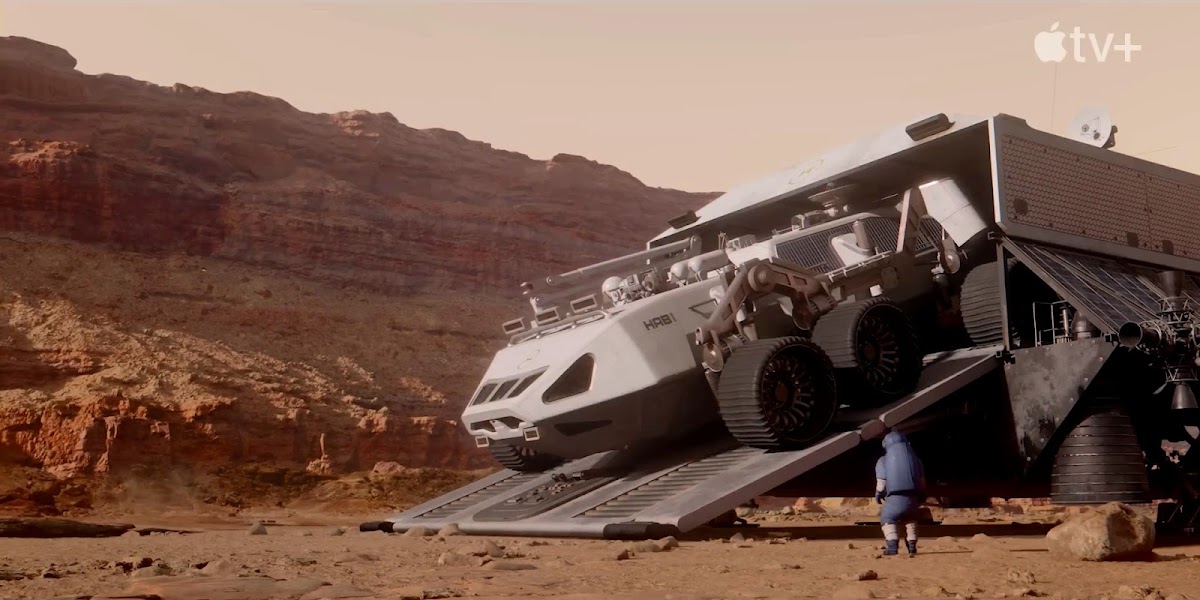 For All Mankind is an alternate history sci-fi TV series exploring the idea of never ending space race if Soviets would have beaten US in the race for the Moon. In first two seasons of the show the focus was the Moon: in season 1, depicting alternate 1969 to 1974, both Soviets and US start building their separate bases near the lunar South pole; in season 2, depicting the alternate 1983, both bases have been expanded and the superpowers compete for resources on the Lunar surface.
For All Mankind is an alternate history sci-fi TV series exploring the idea of never ending space race if Soviets would have beaten US in the race for the Moon. In first two seasons of the show the focus was the Moon: in season 1, depicting alternate 1969 to 1974, both Soviets and US start building their separate bases near the lunar South pole; in season 2, depicting the alternate 1983, both bases have been expanded and the superpowers compete for resources on the Lunar surface.As hinted in the final scene of season 2 Mars will be the central stage in season 3 of the show. Recently released season 3 trailer shows that the Soviets and US are joined by a private company Helios for a three way race to Mars in 1995. Here you can watch the trailer and see some screenshots from it. The season 3 will start airing in June 10 on Apple TV+.
Helios' Mars mobile habitat:
3 rivals racing for Mars in season 3 of For All Mankind TV series:
NASA's spaceship arriving to Mars:
Friday, December 24, 2021
Merry Christmas from Santa Claus on Mars!
 Merry Christmas for you all from Santa Claus on Mars! Artwork by American illustrator, Star Wars artist Chris Trevas. More of his art here.
Merry Christmas for you all from Santa Claus on Mars! Artwork by American illustrator, Star Wars artist Chris Trevas. More of his art here.
Sunday, November 28, 2021
Human mission to Martian moons Phobos and Deimos by Pascal Lee
 Over the years planetary scientist, the director of Haughton-Mars Project, Pascal Lee has created a set of paintings depicting human mission to the Martian moons Phobos and Deimos. Here are several of them. More of his Mars related paintings here.
Over the years planetary scientist, the director of Haughton-Mars Project, Pascal Lee has created a set of paintings depicting human mission to the Martian moons Phobos and Deimos. Here are several of them. More of his Mars related paintings here.
Spaceship approaching Mars with Phobos and Deimos in sight:
Landing on Deimos, the farthest and smallest of the two Martian moons:
Astronauts exploring Deimos:
Landing on Phobos, the closest and largest of the two Martian moons:
Monday, October 18, 2021
Mars exploration roadtrip by Pascal Lee
Over the years planetary scientist, the director of Haughton-Mars Project, Pascal Lee has created a set of paintings depicting a Mars exploration roadtrip. Here are several of them. More of his Mars related paintings here.
Stopping at a crater in Utopia Planitia:
Astronauts exploring a lava tube on Mars:
Mars exploration rover:
Astronaut exploring Mars:
Friday, October 8, 2021
SpaceX Starship on Mars by Erik Corshammar
Saturday, September 4, 2021
Mars exploration expedition returning to their base
Mars exploration expedition finally returning to their base at sunset before the onset of a cold Martian night by Mondolithic Studios (Chris Wren & Kenn Brown).
Saturday, August 28, 2021
First Russian cosmonauts on Mars by Alexander Ovcharenko
First Russian cosmonauts on Mars by freelance concept artist Alexander Ovcharenko (Александр Овчаренко) for Project "СССР-2061" - a community of Russian artists and writers envisioning Soviet Union in 2061 in an alternate reality. In 2011 they held their 1st arts contest asking participants to envision Soviet Union on Mars 50 years into the future. More images for the project here.
Sunday, August 1, 2021
Astronauts exploring Martian canyon by Mark Garlick
Picture of the Day 01/08/2021 - two astronauts exploring a canyon on Mars by British illustrator Mark Garlick. More of his art here.
Subscribe to:
Posts (Atom)









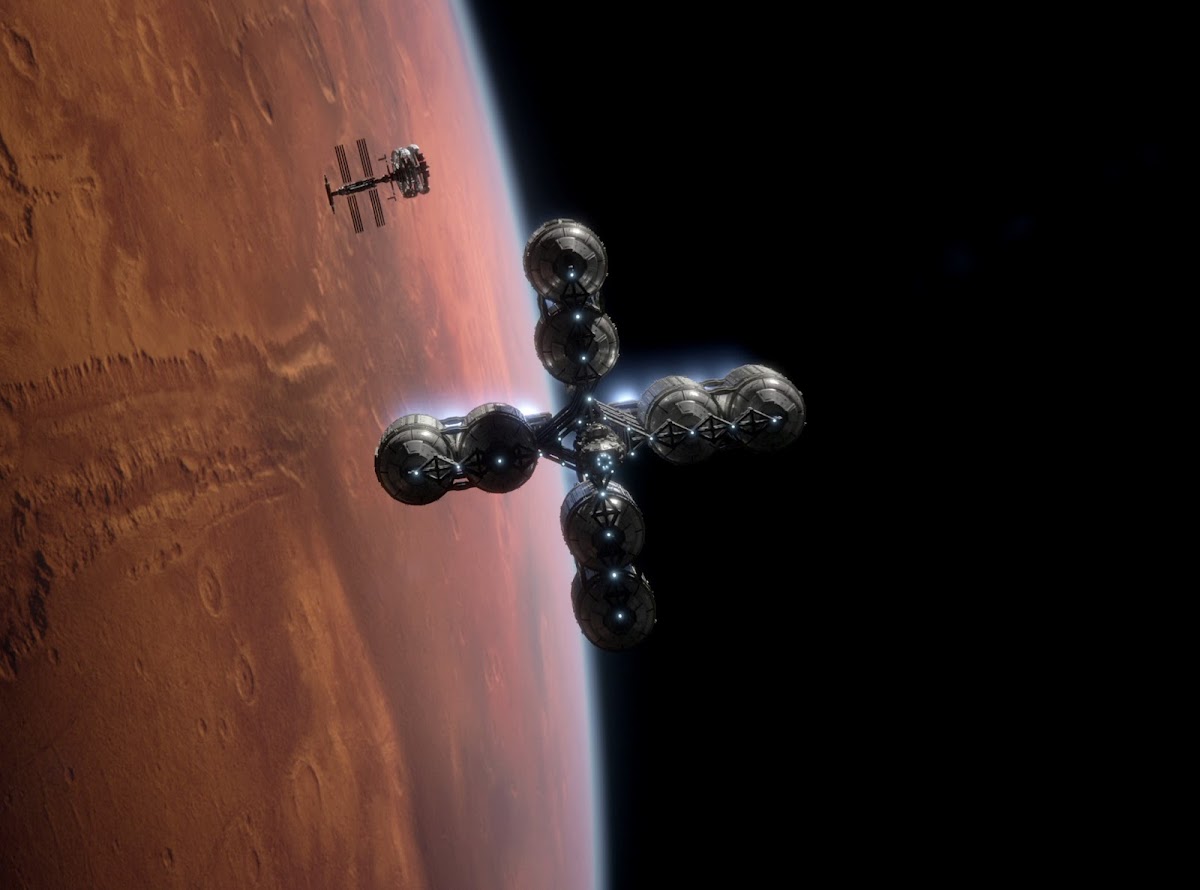
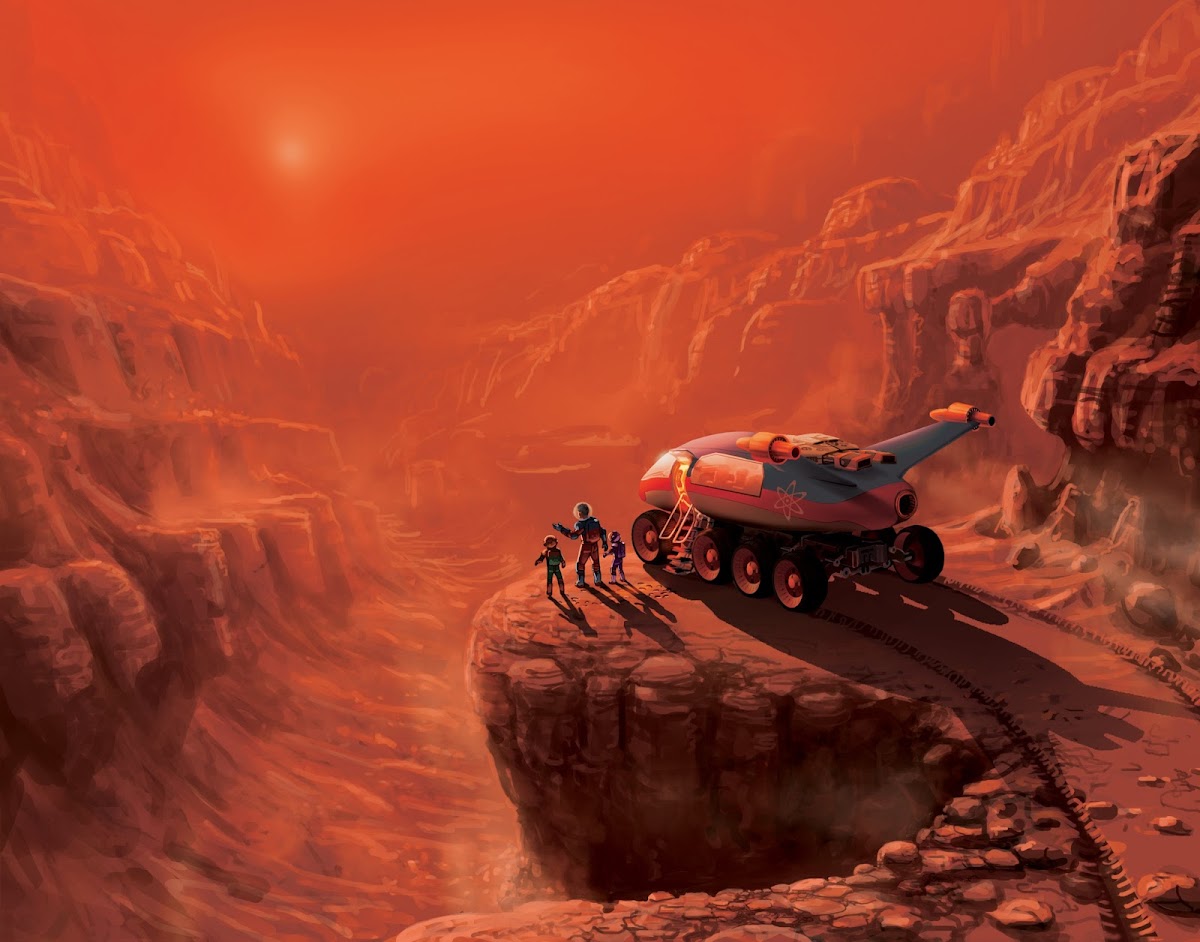
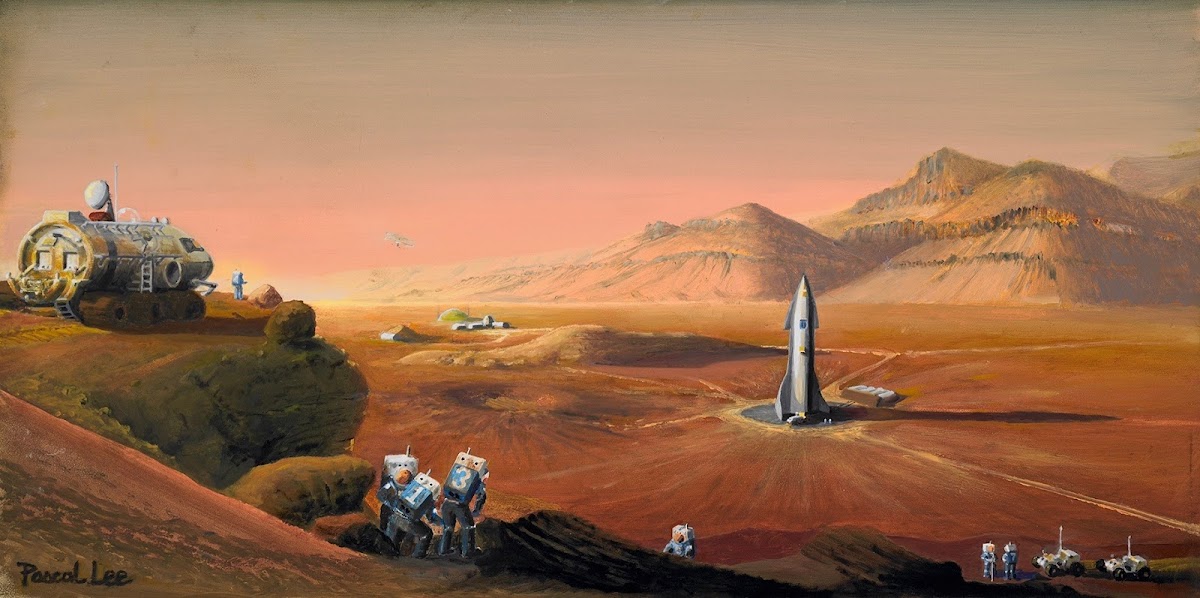

 YouTuber
YouTuber 
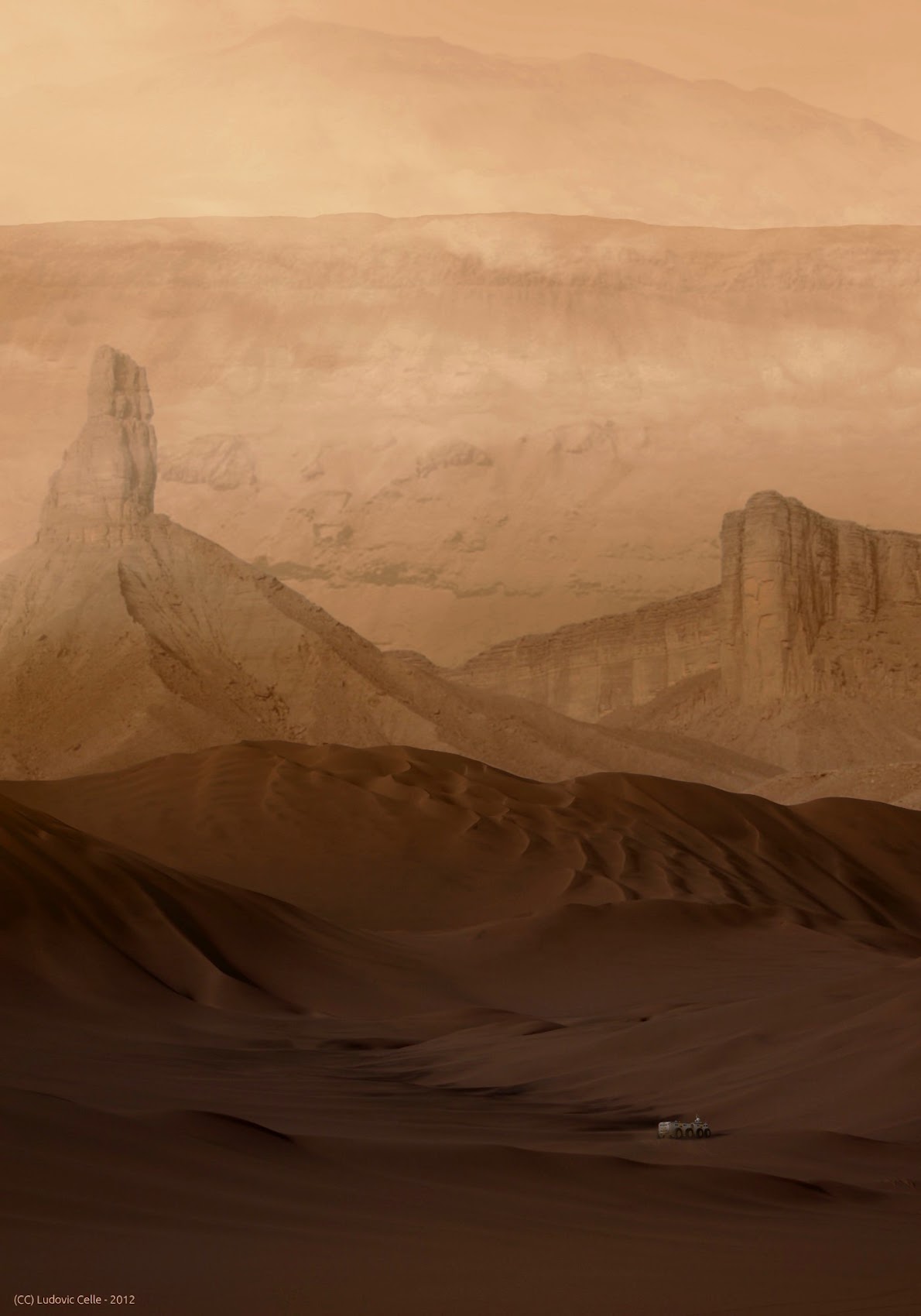


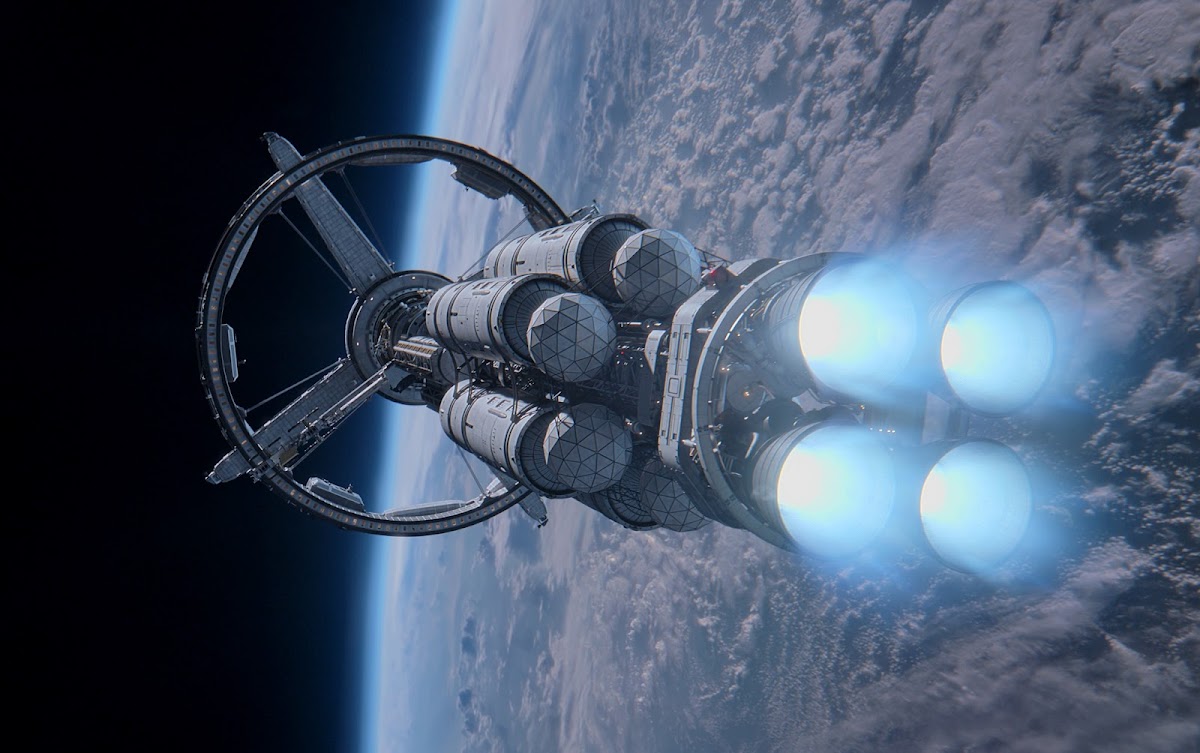
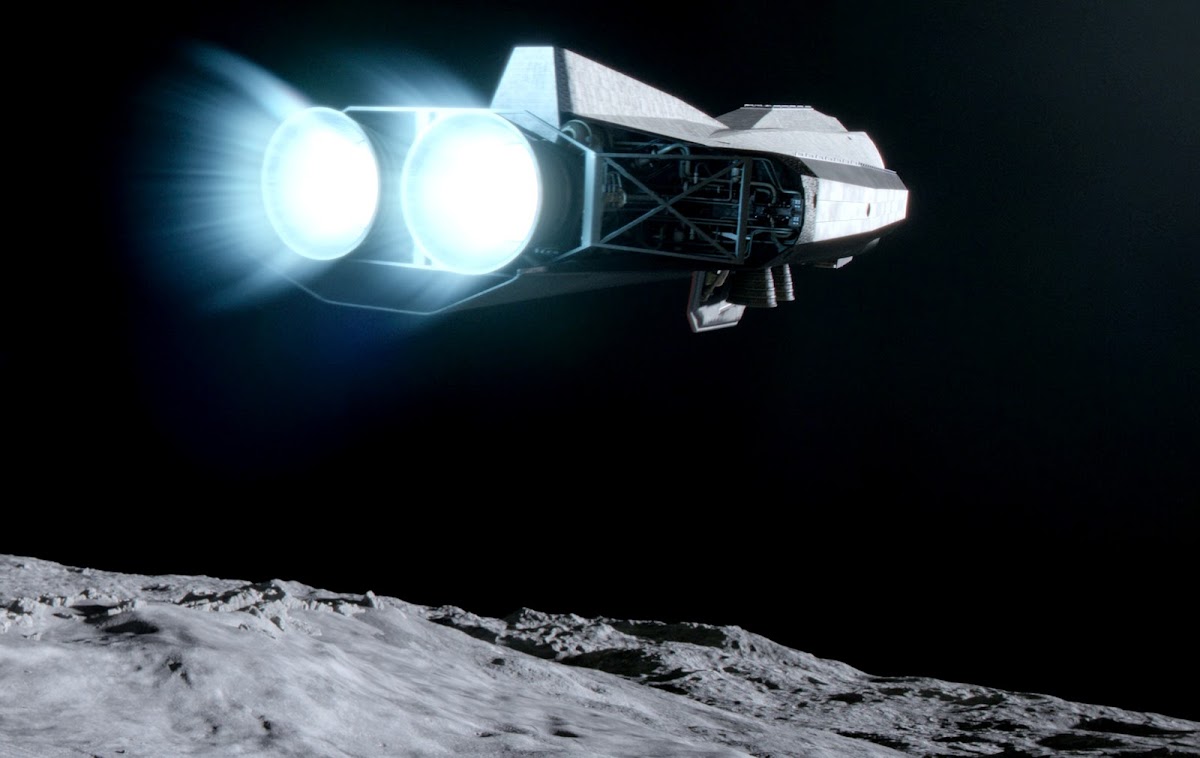

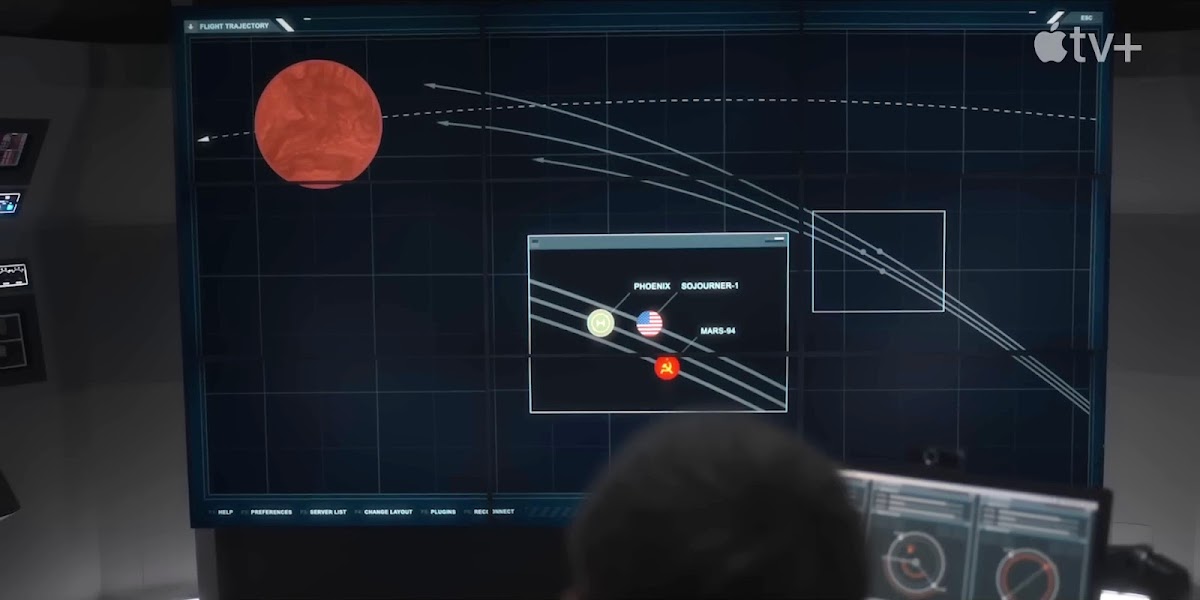


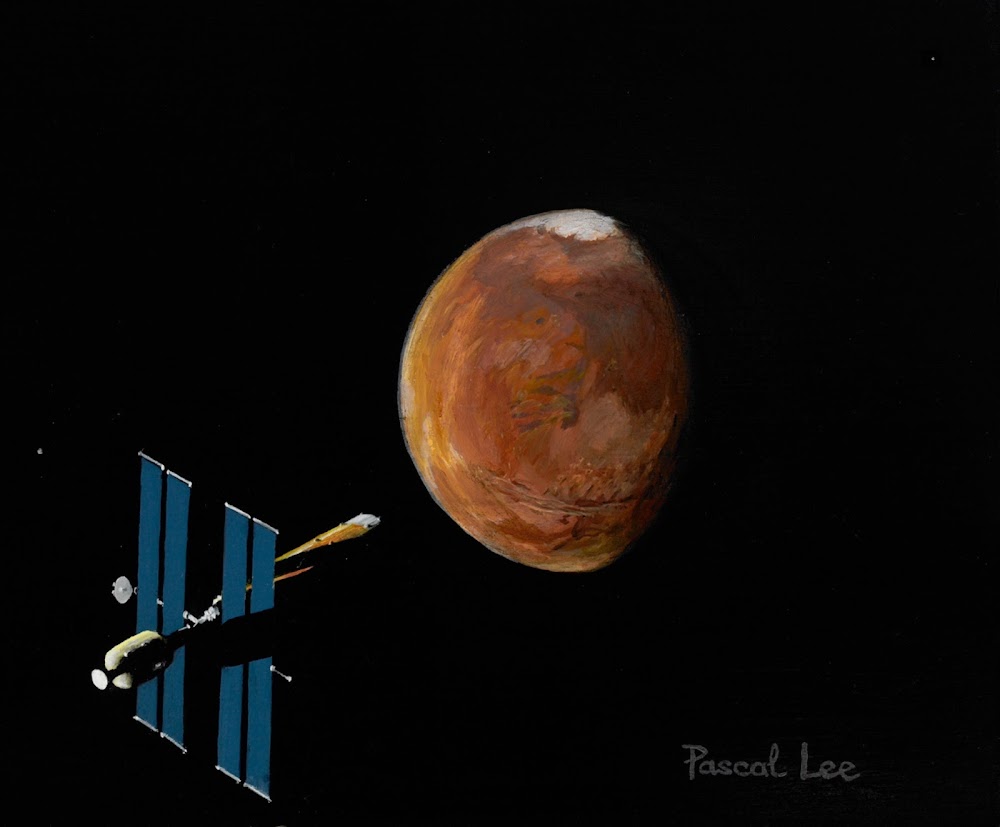






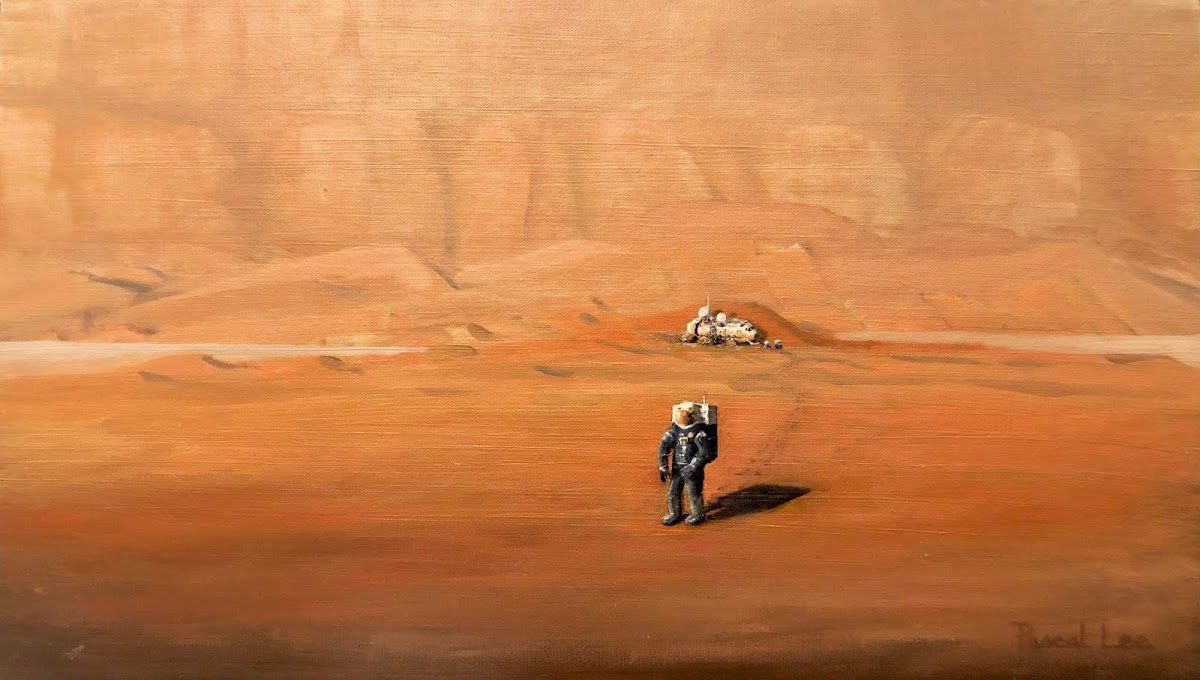
 SpaceX's
SpaceX's 